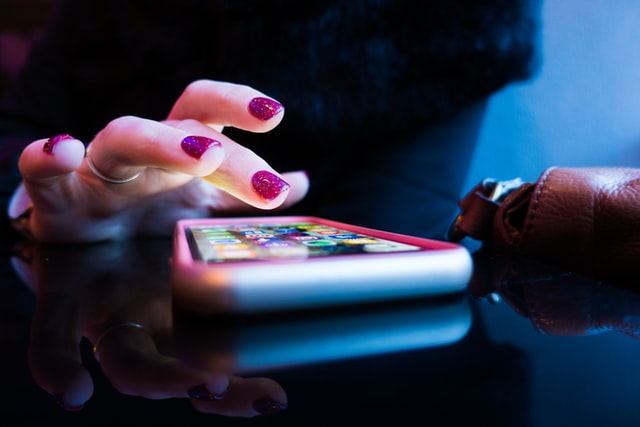Long gone are the days when mobile phones were meant just for calling and texting. Now, they are your portable camera, map, credit card, entertainment center, music player, gaming platform, and the list goes on.
More and more people—on all sides of the education process—recognize that smartphones aren’t only a distraction for students. In addition to that, they have unlimited potential in helping them study.
There are many ways they do that, some more evident than others. Let’s break them down — and take a look at how it became possible in the first place.
Content Summary
4 Reasons Why Smartphones Are Students’ Go-To Tool
First, let’s talk about the whys of this revolution. Why have these devices become irreplaceable? And, more importantly, why do students prefer them to old-fashioned supplies?
Here are four main reasons:
- They’re available 24/7. Unlike libraries, neither this device nor the internet has opening hours. As long as you keep your device charged, it’s here for you.
- Your resources become unlimited. Need help with homework? Google, and you’ll easily find cheap write my research paper help by WritePaper.com among the search results. Doubt something? Wikipedia is at your disposal for fact-checking.
- You always have them with you. When was the last time you forgot a smartphone? Probably, a long time ago. You’re more likely to forget your keys or wallet!
- They’re an all-in-one solution. Most of what you need fits in a device that weighs around 150-200 grams and that you can carry around in your pocket.
5 Student Supplies Replaced by Smartphones
Smartphones didn’t replace just one or two things students’ 90’s counterparts used to carry around. They became a better alternative to an astounding number of supplies, including these five ones.
1. Notebooks & Pens
There’s no need to write your notes by hand anymore. And while educators debate which types of note-taking are the best for information retention, students use their smart devices for:
- Recording the lectures to listen to them later;
- Typing notes in a note-taking app;
- Taking photos of the blackboard or whiteboard (or their classmate’s handwritten notes);
- Reviewing presentations sent by their professors.
2. Calculators
In the previous century, some students had to put the calculator into their backpacks. It used to be this bulky device, and some of the calculators were even larger and thicker than most modern devices. Fun fact: in the ’70s, there was also a boom of digital calculator watches!
Now, any smartphone comes with a preinstalled calculator app. You don’t even need to search for it on Google Play or AppStore.
3. Books
A student’s backpack used to be a lot heavier. The main reason? Books were integral to studying: you always had textbooks with you, as well as some additional literature for assignments and homework.
Now, any textbook has a digital version available, whether it’s released by the publisher or scanned by someone and uploaded online. What’s more, some students opt for audiobooks whenever they can—after all, you can listen to them on the go.
4. Planners
Yes, students used to have a whole separate notebook just to keep track of their schedule and timetable, plan their homework, and write down the agenda.
Now, any app has a calendar and a note-taking app by default. But that’s not all: there are also planning apps designed specifically for students. Here are just a few examples:
- myHomework;
- Egenda;
- My Study Life;
- StudyBunny;
- Easy Study.
5. Dictionaries & Thesauruses
Does anyone even shop for dictionaries and thesauruses these days? Well, probably only Amish people do.
After all, why would you buy a dictionary if you can get anything translated in a few taps? Besides, Google Translate supports 100+ languages—and they’re all at your disposal. A physical dictionary, in its turn, has a limited number of languages: typically, only two.
That’s not even to mention websites like Thesaurus.com, Merriam-Webster.com, and the Free Dictionary. There, you can look up definitions, antonyms, and synonyms—and, once again, your backpack doesn’t get heavier!
3 More Student Activities Made Easier by Smartphones
These supplies fitting in one device aren’t the only benefit of having a smartphone when you’re a student. Here are three more activities that got facilitated by these devices:
- Research. You have all of humankind’s knowledge at the tip of your fingers, 24/7. Research has never been easier.
- Communication. No need to call your professor during office hours to ask them something—you can write an email instead.
- Collaboration. Now, if you need to complete a group project, you can make edits to a Google Doc or Spreadsheet right from your smartphone while managing tasks in Trello.
How Smartphones Took Over: A Brief History
In a nutshell, smartphones gradually became smaller and, therefore, more convenient to carry around. And, at the same time, they got cheaper, making them affordable for more people.
Just consider this. In 1984, Motorola DynaTAC 8000x became the first truly mobile phone on the market. It cost $3,995 (equivalent to $9,952 in 2020) and weighed almost 1 kg!
In the ’90s, when Nokia introduced the first GSM phones that allowed sending and receiving SMS. The ’00s, in their turn, marked the first commercial models with color displays, built-in cameras, and WAP access to the internet.
Then, the first iPhone entered the market in 2007. It weighed just 135 g and was miniature compared to the first Motorola mobile phone. And it finally became (at least somewhat) more affordable: the 4GB version cost $499.
Now, here are five trends that got you where you are now, and that you’ll continue to witness:
- Screens keep getting larger;
- There are in-built facial and fingerprint recognition capabilities in most models;
- Cameras have become more high-quality, and front-facing cameras are now a default feature;
- NFC technology is used for making contactless payments (e.g., Apple Pay, Google Pay);
- Storage space has been gradually increasing, and unlimited storage has become an option (e.g., Google Pixel 4).
In Conclusion: What’s Next?
It feels like stating the obvious, but there’s one thing you can be sure of: smartphones are here to stay. They’re going to become an even more integral part of everyone’s day-to-day life, be it a student or not.
They’re bound to be more welcome in the classrooms, too. Teachers recognize these devices’ potential to make learning easier, more efficient, and fun. And students won’t back out of using them for study purposes, either. Don’t fight the progress – go with it.









